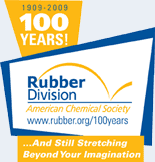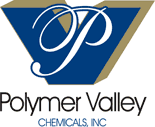![[ Visit ACS Rubber Website ]](images/logo.jpg) |
|
Centennial Elite SponsorsBecome a Centennial Elite Sponsor |
100 Polyisoprene as a useful substrate dedicated to new polymer developments; from natural rubber to bioactive polymersWednesday, October 14, 2009: 1:30 PM
329 (David L. Lawrence Convention Center )
Since the past decade increasing activity devoted to environmentally friendly polymers obtaining has evolved. Indeed, the development of polymers from natural sources such like polysaccharides or polyisoprene rubber is of great interest from an economic and environmental point of view since it can limit the use of petrochemical precursors. Thus the obtaining of alternative polymers presenting specific physical or biological properties is still needed. For these reasons, we focused our efforts in our laboratory, on the synthesis of different polyisoprene based polymers. Such polymers are obtained from high molecular weight polyisoprenes controlled degradation either through an oxidative isoprene unit cleavage or by metathesis using Grubbs catalysts. The telechelic liquid rubber thus produced presents a well defined microstructure as characterized by standard techniques with low polydispersity index by comparison with predictable statistical process. Such a polymer can be further chemically modified in order to be engaged in new polymers synthesis. As an example, such hydroxytelechelic precursors can lead to polyurethanes or photocrosslinkable polymers as coatings or foams. Their mechanical and physico-chemical properties were evaluated, demonstrating their abilities to efficiently substitute analogous standard polymers for diverse applications such like phonic insulation polymers. Moreover, these polyisoprene based polymers can exhibit specific biological activities. Thus some coatings tend to demonstrate their potentialities toward pathogenic bacteria. This biological activity can be related to a bacteriostatic and antifouling effect of the polymer surface. This surprising result has not been related to the rugosity of the surface but more likely to its polarity especially when antifungal properties are expected. Based on previous results, we can assume the fact that these specific bioactive polymers allow their uses in medical or marine sector as an alternative to less environmentally friendly analogues.
|









